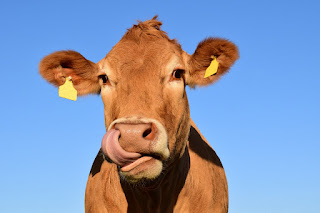What You Don't Know May Surprise You
Ag Law & Policy: What's In It For Me?
I'm starting with a simple confession. I'm late.
Clients, colleagues and friends enthusiastically endorsed my adventure of pursuing an LL.M. degree in Agricultural Law & Policy, and me and my big ideas decided it would be fun to start a weekly blog about what I learn. It is now the fourth week of school, and this is my first post.
The problem? Simply this: we are learning so much it is tough to choose what to write about. The tough choice stymied me. Held me back. Fortunately, the University of Arkansas has a host of brilliant professors and mentors. Our program director, Susan Schneider, suggested that I pick one topic that interests me each week and blog about that. Excellent advice.
What I am most fascinated by this week is the dynamic and complex nature of our agricultural system in the United States and how divorced we consumers are from knowledge about the processes involved in producing food. It is one of the most critical components of our lives. Without food and adequate nutrition, we can't survive. Yet, we push our carts down the aisle, selecting from an overabundance of choices, without any thought to what we are eating and where it came from.
So far, the most significant thing I have learned is that where our food comes from and how it lands in Aisle No 2 matters. A lot. Here are a few reasons:
1. Agriculture is the single largest polluter. Period.
2. Our tax dollars subsidize agriculture. Do any of us pay attention to what is in the farm bill and how our elected officials are voting? The farmers most assuredly do. How about the we the consumers? We the people. We the people who eat what's produced and depend on the farmers to stay alive. We pay for it, and we have no clue what we are paying for.
3. We often hear that production agriculture, fueled by chemicals and technology, is necessary to feed the world. In spite of it all, many people don't receive adequate nutrition. United Nations figures indicate 795,000,000 (that's 795 million) people are undernourished.
4. At the same time, we have an obesity epidemic in some countries, including the United States. Many obese people are malnourished because their diets don't have proper nutrition.
5. We think that our grocery store purchases are food. But, reading the label says otherwise. Often "natural" products with pictures of healthy fruit on the front of the package are really a mix of chemicals, including sugars. Take a look next time you cruise the aisle.
All this to say that food and farming involves a dizzying array of factors. And, it is fascinating. I look forward to learning more and sorting it out. To making this world a healthier place for all of us.
And, I look forward to hearing from you. What questions are on your mind? Drop me a line at hooraygriculture@gmail.com.
Until next week, back to the books ...
4. At the same time, we have an obesity epidemic in some countries, including the United States. Many obese people are malnourished because their diets don't have proper nutrition.
5. We think that our grocery store purchases are food. But, reading the label says otherwise. Often "natural" products with pictures of healthy fruit on the front of the package are really a mix of chemicals, including sugars. Take a look next time you cruise the aisle.
All this to say that food and farming involves a dizzying array of factors. And, it is fascinating. I look forward to learning more and sorting it out. To making this world a healthier place for all of us.
And, I look forward to hearing from you. What questions are on your mind? Drop me a line at hooraygriculture@gmail.com.
Until next week, back to the books ...


Comments
Post a Comment